DESPITE many recent developments in magnetic tape recording, the ordinary gramophone record remains at present the most popular medium for the storing of musical program material. Whilst there are available a few instruments designed essentially for the playing of tape records, as distinct from tape recorders, their number falls very far short of the millions of disk-record reproducers of various types that are in current use.
The advent of the stereophonic technique has not altered this general trend, as was expected in some quarters when stereophonic tape records first made their appearance, and such records now have to compete with stereo phonic disk records. Although magnetic tape is extensively used as a hi-fi program medium, it is principally associated with tape recorders, with which a private library of musical works can be built up by way of a V.H.F. radio channel.
To facilitate editing, save expense and avoid undue retakes, disk records usually begin as tape records. After a work has been recorded, and both the artist and technician are satisfied with regard to their own particular interests in the material, it is transferred from the tape to a wax or lacquer disk. From this original is made a master disk by a process of copper plating. The ridge of the master represents the modulated groove of the original, so the master can be used as a direct working matrix for producing the final pressings.
Usually, however-particularly where a large number of pressings is required there are two more stages in the process, resulting in two more intermediate disks, a positive "mother" and a negative "stamper". In this case the stamper is used as the actual working matrix.
Most commercial 78 r.p.m. records are produced basically of shellac, while their microgroove counterparts of the so-called unbreakable type are made of a soft plastic called vinylite.
The basic theory of disk recording has already been briefly discussed at the end of Section 1, and enlargement on the subject is hardly warranted in a book of this nature. However, there are one or two rather important points about the care of records which should be mentioned.
Records are rapidly ruined by the use of an incorrect stylus, a too-heavy pick-up, by dust and binding of the tone arm on its bearing, and, of course, by rough handling. Service technicians should bear these points in mind when using a customer's records for test purposes. Certain hi-fi enthusiasts lavish as much care on their records as does a mother on her new baby, and the technician should always handle records with care.
Microgroove records require a stylus of dimensions between 0·0008 in. and 0.001 in. (one thou' or 25 microns), while a tip radius of between 0.0025 in. and 0·003 in. is satisfactory for 78 r.p.m. records. If a microgroove stylus is used on a 78 r.p.m. record the tip will skate along the base of the groove and give rise to a very high noise level, besides ruining the stylus if not the record. A 78 r.p.m. stylus used on a microgroove record will have great difficulty in remaining in the groove; it may intermittently ride on the "horns" between the junction of the top of the groove wall and the "land" between the groove. There will be a considerable loss of high-frequency response. Indeed, if persistent use is made of the incorrect stylus, this response will disappear from the record permanently.
Dust is one of the worst enemies of disk records. Simply wiping the record with a dry cloth does little to alleviate the problem, in fact it aggravates it by imparting a high static charge to the disk which makes it act as a magnet for dust particles. There are several devices on the market for the elimination of dust, and fluids with which the records can be polished whilst also being rendered temporarily anti-static. G. A. Briggs recommends a detergent such as Stergene or Quix, diluted by adding 95 percent distilled water. He states that a medicine bottle of the liquid can be filled at a cost of less than sixpence, and that in the dustiest of districts this should last a year.
Unless the tone arm is perfectly free to rotate in its bearing the groove wall will be subjected to extreme pressure, the impressed modulation pattern will become distorted and in bad cases the "land" between the groove may collapse. There is usually an adjustment on the tone arm in relation to the bearing which can be set to provide adequate freedom of movement whilst avoiding undue up-and-down play. A spot of very light machine oil on the bearing often helps.
The downward pressure of the stylus on the record is much of a compromise and depends upon the type of pick-up and record: 78 r.p.m. records usually require a greater downward pressure than microgroove records in order to hold the stylus in the groove. This applies particularly to older pick-ups. The downward pressure of modern pick-ups may be as low as 4 grams. This has been brought about by progressive attention to such points as the total compliance and total effective mass in relation to the stylus tip.
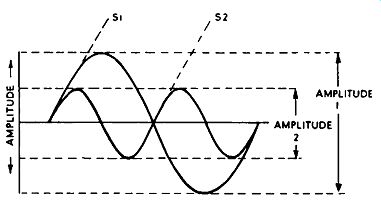
FIG. 6.1. Diagram of constant-velocity recording for two frequencies.
Whilst a reduction in the downward pressure, or playing weight as it is sometimes called, will increase the life of the record and stylus, it is never a good idea to re duce the playing weight below that stipulated by the maker as this may result in "groove jumping", which may be more detrimental to the record and stylus than a gram or two of extra weight.
RECORDING CHARACTERISTICS
The recording head transduces the modulation pattern of the a.f. signal at the output of an amplifier into lateral movement of the recording stylus.
In this way the pattern corresponding to the modulation is impressed upon the groove as it is being cut during the recording process. The actual lateral oscillations (low-frequency) of the recording stylus can readily be felt by lightly placing a finger on the stylus while the amplifier is receiving a program signal.
The two basic factors associated with the lateral oscillation of the stylus are amplitude and velocity. If the velocity of the stylus is to be maintained constant over the whole of the audible frequency range, as is usually required, it is clear that the amplitude of the stylus will increase with decrease in frequency. At high frequencies the amplitude will be very small and at low frequencies it will be very large. This simple rule can be expressed in terms of velocity as 2 pi /A, where/is the frequency in hz and A is the peak amplitude.
Thus, in order to maintain the velocity at a constant value, A increases as f reduces.
The idea is not clearly understood by all service technicians, and since it is rather important in hi-fi work, Fig. 6.1 is given to illustrate it better. Waves A and B represent the modulation pattern imparted upon the groove of a record owing to the lateral oscillation of the stylus. The velocity of the stylus is represented by the slopes SI and S2 of the waves. Wave B has twice the frequency of wave A, but in order for the slopes to remain equal (representing constant velocity) wave B is half the amplitude of wave A. For a constant stylus velocity, this means that the amplitude will increase by 2:1 for every 2:1 decrease in frequency; or, expressed more technically, the amplitude will decrease 6 db per octave.
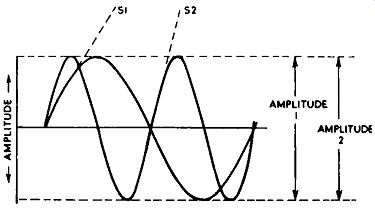
FIG. 6.2. Diagram of constant-amplitude recording for two frequencies.
Fig. 6.2 shows the effect for constant amplitude. As before, wave B is twice the frequency of wave A, but since the amplitudes are constant and equal, the slope (S2) of wave B is steeper than the slope (S1) of wave A indicating that the velocity of the stylus required to impart the higher frequency wave is greater than that required to impart the lower-frequency wave. For constant amplitude, the velocity, in fact, increases at the rate of 6 db per octave.
Since the amplitude of the recording stylus would be excessive at low frequencies, and result in break-through from one groove to the next, if the constant-velocity principle were applied to disk recording, the constant amplitude idea is adopted for the low frequencies and the constant-velocity idea for the higher frequencies. This works well in practice, since constant amplitude recording would never do for the high frequencies owing to distortion which would result from the excessive velocity of the stylus tip.
Pick-ups would never track and the modulation pattern would soon collapse, even if it were possible to impress it at high velocity on the groove.
The point at which the constant-amplitude recording changes over to constant-velocity recording is known as the "turnover" or "crossover". The response of the recording head is usually equalized in such a way as to provide constant-amplitude recording up to the crossover point, which is positioned somewhere in the region of 500 hz. The change-over from constant amplitude to constant velocity is not "sharp", but occurs gradually as governed by the equalizing network. A representative curve is given in Fig. 6.3, which is typical of a 78 r.p.m. recording characteristic.
If a sliding-frequency record is cut to this characteristic, and is played back with a moving-coil or moving-iron type pick-up, whose output voltage is equal to the velocity, the output voltage from the pick-up will follow the curve very closely. Thus, in order to maintain a constant output at the lower frequencies, the pick-up circuit will have to be equalized to provide a bass lift, and the equalization curve must be the inverse of that at Fig. 6.3. A crystal-type pick-up will not require the same degree of equalization, since its output is proportional to displacement and not to velocity, but more will be said about this later.
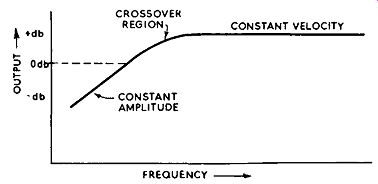
FIG. 6.3. Typical re cording characteristic of 78-r.p.m. record.
The recorded level is usually given in terms of velocity (r.m.s.) at 1,000 hz or in decibels relative to I cm/sec (zero db). Maximum recorded level may lie between 15 db and 26 db, depending upon the type of record and recording characteristics. In accordance with this practice, the output voltages of pick ups are given in terms of mV per cm/sec.
Since the microgroove record is recorded at a lower level than the 78 r.p.m. record, the noise actually generated through the playback stylus tracking in the groove assumes proportions approaching the modulation level of soft passages of music. This disconcerting background noise (usually referred to as "record hiss") is reduced by the vinyl-base material of the record itself, and additionally by the application of a progressive boost to the higher frequencies of the recording signal.
This recorded emphasis of the higher frequencies is of no consequence from the "quality" aspect, since on playback a de-emphasis network can be used to linearize the response. However, it has some bearing on record hiss because the noise frequencies which are most troublesome are also reduced considerably in level by the de-emphasis or equalizing network. A similar idea is adopted in f.m. receivers and adaptors (see the author's "F.M. Radio Servicing Handbook"). This noise-reducing arrangement has led to a large number of recording characteristics, each requiring its own particular de-emphasis curve to provide the correct degree of equalizing. Modern hi-fi control units have three or four record-equalizing positions on the selector switch, and whilst these do not cater completely for the many recording characteristics, they do permit a fairly close compromise between characteristics which have much in common. Slight deviations can be compensated for by the use of the tone controls.
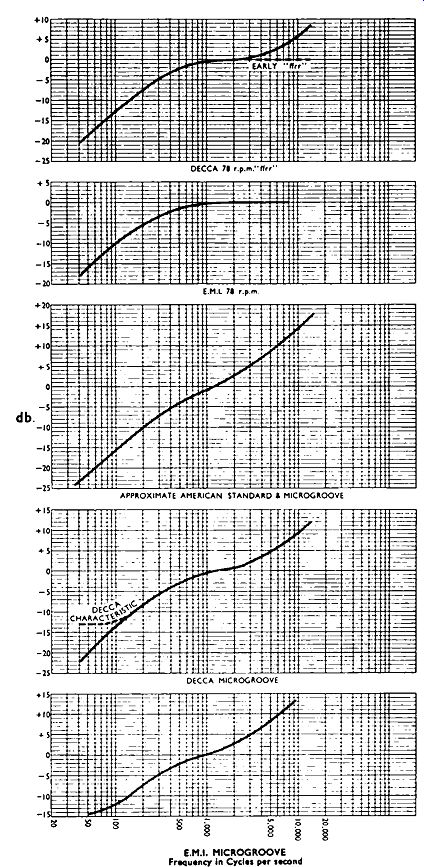
-------------- E.M.I. MICROGROOVE Frequency in Cycles per second
A formidable array of recording characteristics which have been adopted over the years by leading gramophone record manufacturers is given in Fig. 6.4. Whilst these curves are not necessarily identical with those published by the record manufacturers, they do represent close approximations which, when correctly equalized, have been found to give the best quality on a perfectly linear amplifier. It will be seen that, apart from the E.M.I. 78 r.p.m characteristic, and the early Decca "ffrr", the curves indicate the use of varying degrees of high-frequency emphasis; this being made possible in later years by improvements in the design of pick-ups. The American curve is one of almost constant amplitude, apart from the slight fall-off in slope in the region of 1,000 hz.
Fortunately, there now appears to be a move to standardize recording characteristics throughout the world. In 1955 a curve sponsored by the Radio Industries Association of America (R.I.A.A.) was accepted by the major recording companies, and in this country was embodied in British Standard 1928:1955. This curve is given in Fig. 6.5 (see also Fig. 2.6 for the equalization curve). It is to be hoped that there will be an early move to standardize stereophonic records before the situation there gets out of hand.
DISK RECORDING PROBLEMS
There are one or two further points with regard to disk recording which concern the service technician. As the recording stylus cuts a modulated groove, the speed of the record at the point of contact with the stylus decreases linearly towards the inner diameter of the disk. With a 78 r.p.m. 12-inch disk, the speed at which the groove is cut falls progressively from about 47 in. per second to 17 in. per second. This means that towards the inner diameter the modulation waves are cut at a far steeper angle than are the waves of the same frequency towards the outer diameter.
Owing to this, there is a progressive falling-off in the high-frequency response towards the center of the record. With a 78 r.p.m. 12-inch record, the actual wavelength of the impressed modulation at 10,000 hz drops from about 0·0047 in. to 0·0017 in. from the outer to the inner diameters of the ...

Fig. 6.4. Recording characteristics approximating those
used by leading record manufacturers.

Fig. 6.5. Recording characteristic
equal to B.S. 1928: 1955.
... record. There is little that can be done on playback to alleviate this falling response, apart from ensuring that the stylus is in good condition. The smaller diameter of the tip of a microgroove stylus greatly reduces this trouble on the overall slower speed of microgroove records, but reducing the diameter of the tip on standard 78 r.p.m. records would not likewise enhance the response.
During the recording process the higher frequencies are sometimes given a boost, in addition to normal pre-emphasis, which increases progressively as the recording stylus approaches the innermost groove. This idea, known as "radius compensation", is used by home recordists as well as by certain commercial recording organizations.
An optical method, devised by Buchmann and Meyer, of determining the level of recording on a disk over the whole of the audio spectrum is shown in Fig. 6.6. Various spot frequencies spaced over the spectrum are recorded at intervals throughout the record, and by manipulating the record in relation to a light source the bands of modulation pattern can be clearly observed.
Since the breadth of the bands corresponds to the velocity of the recordings, such a record produced from a constant-input signal will readily reveal the response deficiencies of the recording amplifier and head. The record is also of value for checking the frequency response of pick-ups. The photograph of the Buchmann and Meyer pattern shows that the recording response is maintained reasonably constant at the higher frequencies, and also shows the constant amplitude (falling velocity) characteristic at the lower frequencies, towards the inner diameter of the record.
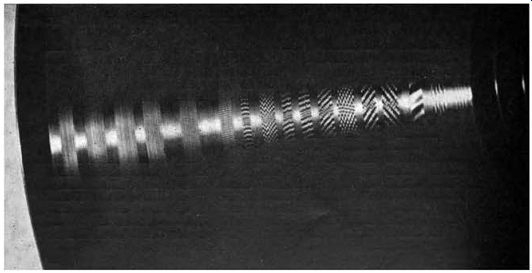
FIG. 6.6. Showing how a source of light reflected from a recording of
spot frequencies over the audio spectrum indicates the recorded level
in terms of breadth of the bands.
(The Buchmann and Meyer test.)

FIG. 6.7. Tracing distortion is caused because the line (full lines
on diagram) between the points of contact of the reproducing stylus progressively
deviates from the line (dotted lines on diagram) between the points of
contact made by the recording stylus on the sloping parts of the wave.
The lines coincide only at the peaks of the wave and when the groove
is unmodulated. This results from the fact that a spherical-tipped stylus
is used to reproduce a waveform imparted by a chisel-edged recording
stylus.
The pinch effect is the narrowing of the groove on the sloping parts of the wave, causing a vertical movement at twice the recorded frequency of the reproducing stylus.
In order to reduce the high-frequency loss during the recording process as the result of the increasing impedance offered to the recording stylus, the "hot stylus" technique is sometimes adopted. A few turns of resistance wire are wound around the recording stylus, and a controlled current is passed through the coil, thus raising the temperature of the stylus sufficiently to soften the cellulose lacquer. This reduces the impedance presented to the oscillating stylus whilst recording, and not only enhances the "top" response, but also reduces surface noise on playback.
TRACING DISTORTION AND THE PINCH EFFECT
Inherent in disk recording are other distortions which, although not of direct concern to the hi-fi service technician and enthusiast, at least warrant consideration. Both tracing distortion-not to be confused with "tracking distortion", which is a direct function of replay-and the pinch effect arise from the fact that the reproducing stylus has a spherical tip while the recording stylus has a chisel edge. The facets of the recording stylus, which is usually of sapphire, are set to produce a low-noise polished groove, of depth between 0·0015 and 0·0025 in.
Fig. 6.7 shows a waveform of modulation which may be impressed upon a groove of a record. The cut is in the direction of arrow A, while the amplitude characteristics are imparted by reason of the lateral movement of the stylus as at B. The cutting face of the stylus is always maintained in the same plane, at right angles to the direction of the cut, irrespective of the modulation pattern. This is shown by the dotted lines across the groove. On playback, however, the reproducing stylus maintains contact at the sides of the groove at points directly opposite, thus giving the full lines shown on the diagram which are always at right angles to the direction of the groove.
It will thus be seen that the points of contact of the recording stylus on the sides of the groove coincide with those of the reproducing stylus only at the peaks of the wave and when the groove is unmodulated. On the sloping parts of the wave, the line between the points of contact of the reproducing stylus progressively deviates from the line between the points of contact made by the recording stylus. Now, since the lateral movement of the recording stylus was in the direction of the dotted lines and the output signal of the pick-up is promoted by the movement of the reproducing stylus in the direction of the full lines. it will be apparent that the reproduced waveform differs from the waveform of the signal applied to the recording head.
Briefly, harmonic and intermodulation distortions are introduced by tracing distortion because a spherical-tipped stylus is used to reproduce a waveform imparted by a chisel-edged recording stylus, which results in the curve traced by the center of the tip of the reproducing stylus not being an exact replica of the modulated groove. It will be evident that this kind of distortion increases with amplitude and frequency of the recorded wave, and also towards the inner diameter of the disk, since in all these cases there will be an increase in the slope of the waveforms recorded.
The "pinch effect" is also caused by the difference between the shapes of the recording and reproducing styli. As is shown in Fig. 6.7, the groove is equal to the full width of the recording stylus only when it is unmodulated and at the peaks of the modulation. At other times during modulation, the cutting edge is at an angle to the direction of the groove, and at these times the groove width decreases. Modulation of a simple sine waveform will, therefore, cause the reproducing stylus to oscillate vertically at twice the frequency of the modulation. This is because the reproducing point is truly spherical and thus rides up the groove when it narrows. The same effect occurs in a much more complex way when ordinary sounds and music are recorded.
Whilst a perfect pick-up would not give an output from a vertical movement, there is a small unwanted signal generated from this cause in most pick-ups, and because of its method of generation it is usually rich in second harmonics. Modem pick-ups which adopt the cantilever-stylus principle are Jess prone to this trouble than their older counterparts.
Owing to the reduced width of the groove of microgroove records and the reduced diameter of the tip of the reproducing stylus, these records show a distinct improvement in terms of distortion over the standard 78 r.p.m. record. Nevertheless, as the innermost grooves are approached the distortion rises rapidly, and at 5,000 hz it may be as high as 20 percent at a recorded diameter of 4 in. This is where the microgroove record scores again, since the minimum recorded diameter is 4.75 in., compared with the 3¾ in. for standard 78 r.p.m. records. Home recordists should never be tempted to cut too far towards the center of a disk if the quality of reproduction is to be maintained.